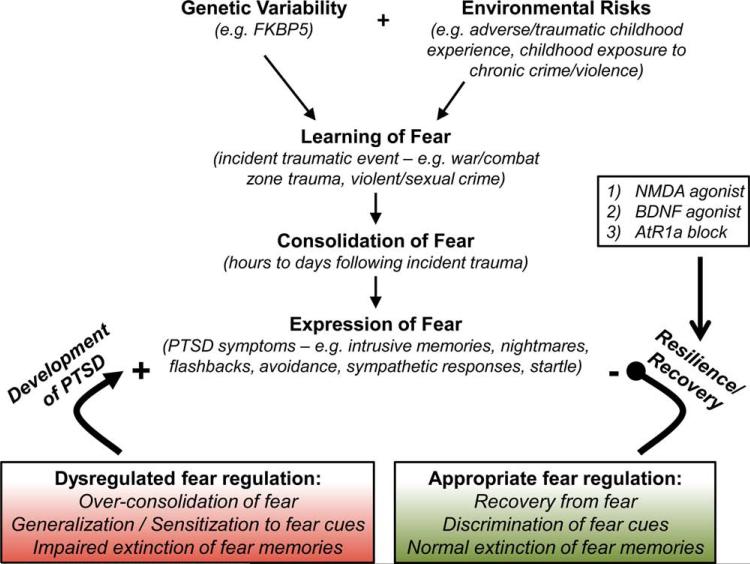Figure 1.
Factors contributing to the development and pathology of posttraumatic stress disorder (modified from ref. 9). Variability in individual risk of developing PTSD may be attributed to a number of factors. Preexisting sensitivities such as genetic variability may interact with early life trauma to predict adult PTSD. Upon experience of the incident trauma in adulthood, the individual will undergo consolidation of the fear memory, which occurs in the minutes, hours, and days following the traumatic event. After the formation of the fear memory, individuals will express their fear in the form of PTSD symptoms that can include intrusive thoughts or memories related to the trauma, nightmares, flashbacks, avoidance of trauma cues that might trigger memories of the trauma event, or sympathetic responses. Individuals who go on to develop PTSD exhibit dysregulated fear regulation in the form of overconsolidation of fear, generalization of fear cues, and impaired extinction of fear memories. On the other hand, resilient individuals who recover from the trauma will display appropriate fear regulation consisting of recovery from the fear, discrimination of fear cues, and normal extinction of fear memories. Current therapeutic research approaches for PTSD seek to enhance the extinction learning that forms the basis of common cognitive behavioral therapies such as exposure therapy, thus enhancing the resilience and recovery of individuals susceptible to PTSD. This review will highlight three systems involved in the extinction of fear learning: (1) NMDA, (2) BDNF, and (3) the renin-angiotensin system.

